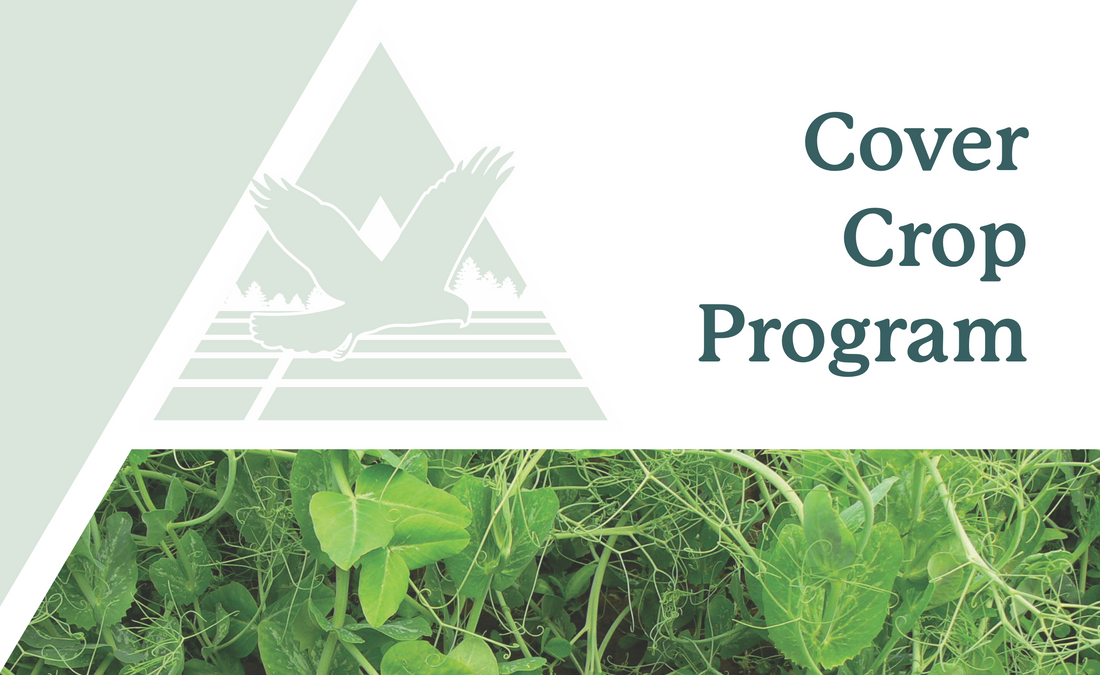Fall cover crop seeding is a cornerstone of responsible and forward-thinking agriculture. By tapping into the wisdom of nature, farmers can enjoy a myriad of benefits, from soil health revitalization and nutrient management to erosion control and climate resilience. And right now, the Delta Farmland & Wildlife trust offers a Cover Crop Stewardship program. This program offers rebates for farmers that seed crop crops!
The Cover Crop Program (CCP) is a farmer focused cost share program which provides funding to local farmers for the planting of cover crops in the summer or fall following the harvest of a cash crop. Cover crops are to be left unharvested during the winter months until the spring of the following year. The program aims to provide ecosystem services throughout the winter, when fields would otherwise be left fallow.
For more information, and to apply, visit www.dfwt.ca.
Why Cover Crops?
As the vibrant colors of summer fade and the air takes on a crisper edge, farmers are presented with a valuable opportunity to nurture their land in preparation for the coming seasons. Seeding cover crops in the fall is a practice that holds immense potential, offering a host of benefits that extend far beyond the immediate growing period. Here are some of the advantages of advantages of fall cover crop seeding and its pivotal role in fostering sustainable agriculture:
-
Soil Health Rejuvenation
Cover crops acts as a natural elixir for tired soils. After the demands of the growing season, soil can be left depleted and compacted. Cover crops, with their intricate root systems, work tirelessly beneath the surface to break up compaction, promote aeration, and enhance soil structure. This rejuvenation sets the stage for healthier root penetration and improved nutrient uptake in subsequent crops. -
Nutrient Capture and Recycling
Cover crops are masterful scavengers, adept at capturing and storing excess nutrients. By planting cover crops in the fall, farmers can harness this remarkable ability to prevent nutrient runoff during the rainy months. These cover crops absorb surplus nutrients, like nitrogen, preventing them from leaching into water bodies and contributing to water pollution. Subsequently, when cover crops are incorporated back into the soil, they release these stored nutrients, nourishing the land for the next planting season. -
Weed Suppression and Reduction
Cover crops establish a protective barrier against invasive weeds. The dense canopy they create shades out weed seedlings, stifling their growth and reducing competition for resources with cash crops. This not only diminishes the need for herbicides but also minimizes the emergence of weeds that can harbor pests and diseases. -
Erosion Control
The transition from fall to winter often brings increased rainfall and potential erosion. Cover crops act as nature's armor, shielding the soil from the erosive forces of wind and water. Their intricate root networks hold the soil in place, preventing erosion and safeguarding against the loss of valuable topsoil. -
Climate Resilience and Carbon Sequestration
Fall cover crops play a significant role in climate resilience. As they photosynthesize, cover crops capture carbon dioxide from the atmosphere and convert it into organic matter. When these cover crops are incorporated into the soil, this organic matter becomes a powerful agent for carbon sequestration. This dual benefit reduces greenhouse gas emissions and improves soil health, making agricultural systems more resilient in the face of climate change. -
Enhanced Biodiversity
Cover crops create an inviting haven for beneficial insects, microorganisms, and small mammals. The rich tapestry of these organisms beneath the soil surface contributes to a vibrant and balanced ecosystem. This biodiversity helps control pests, enhances soil fertility, and promotes overall agricultural sustainability.
Here is the list of cover crop seed available from TerraLink. To find out which seed is best for your cover crop needs, or if you don't see what you are looking for, give us a call or contact.

